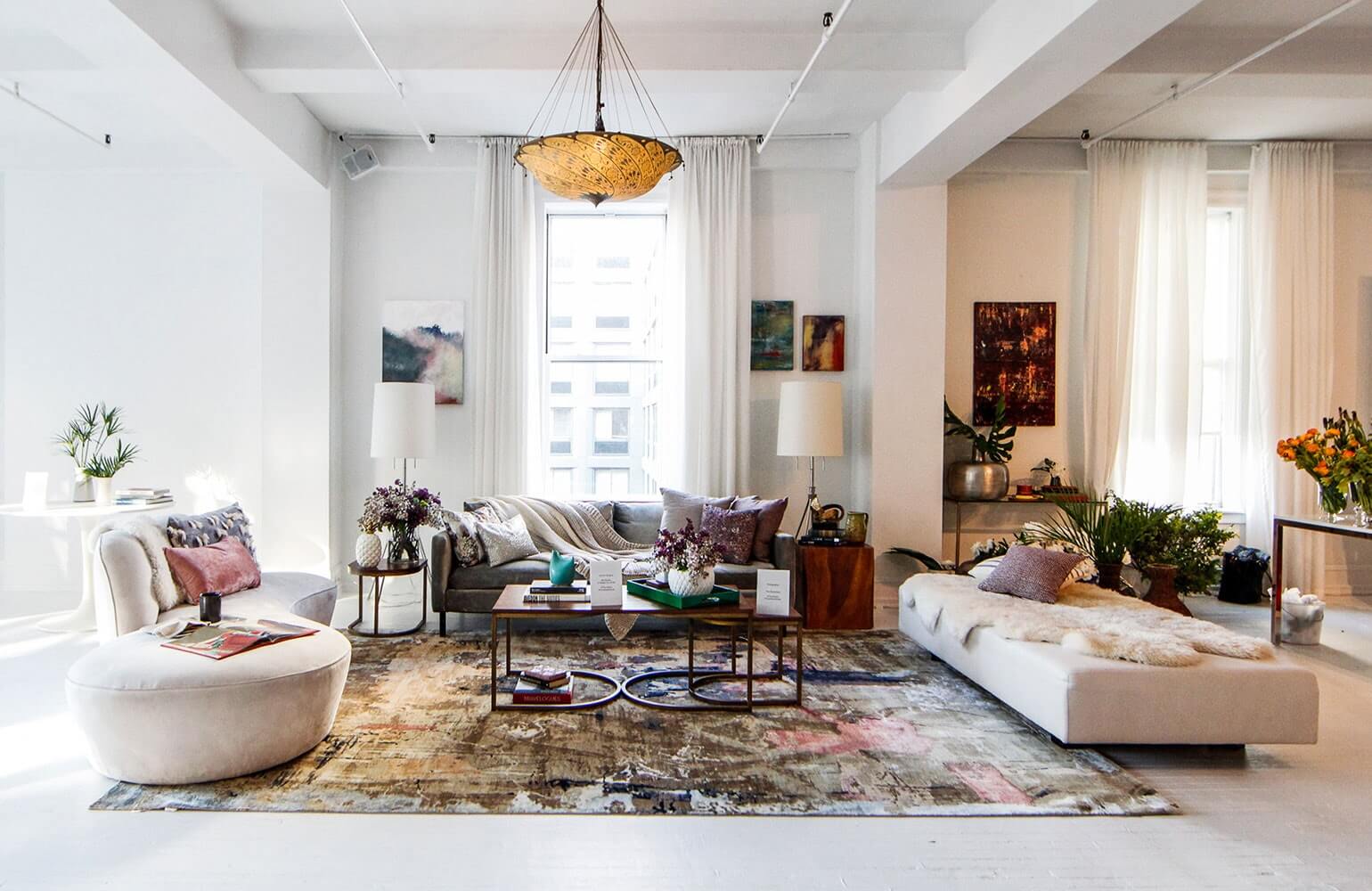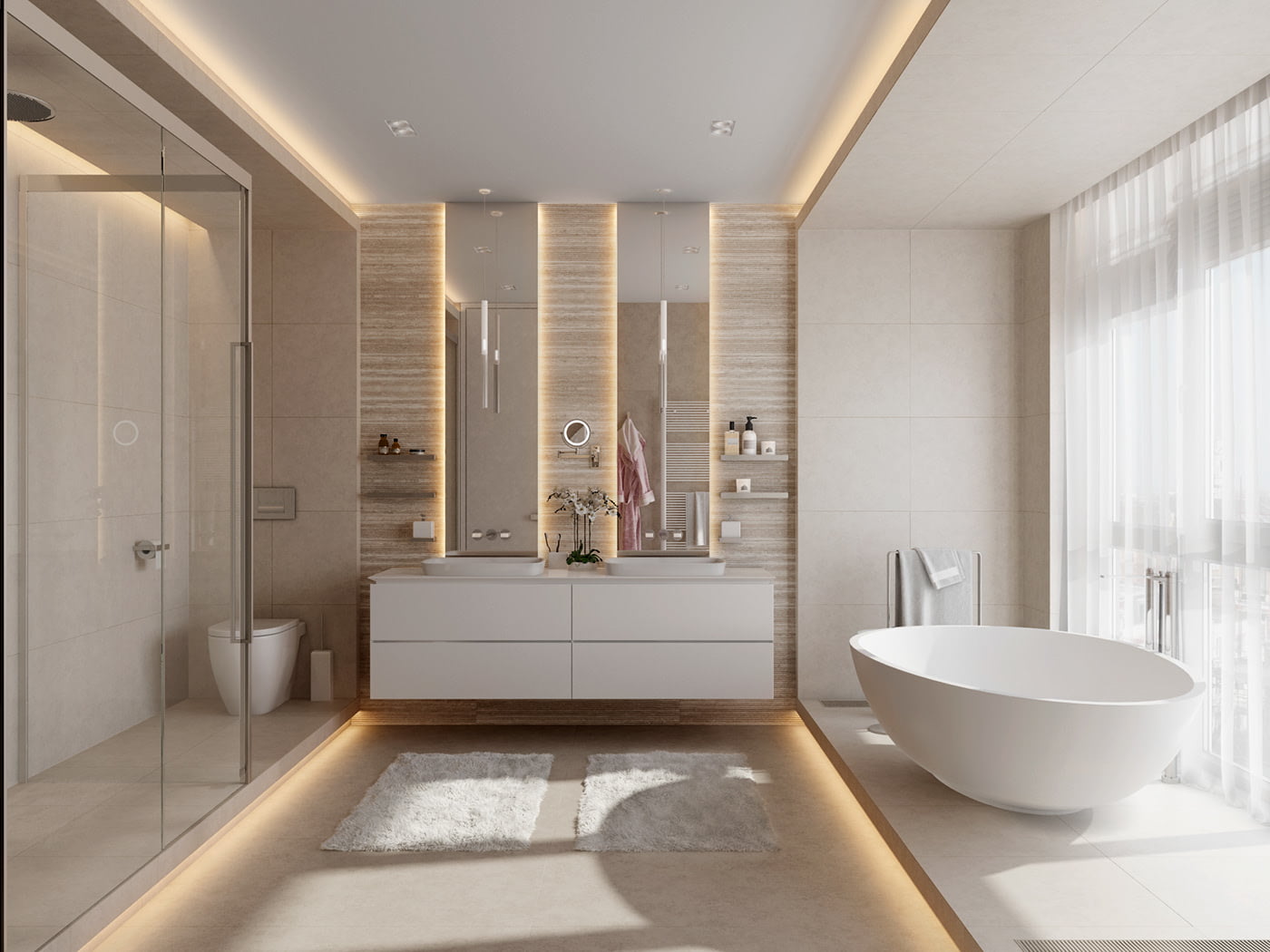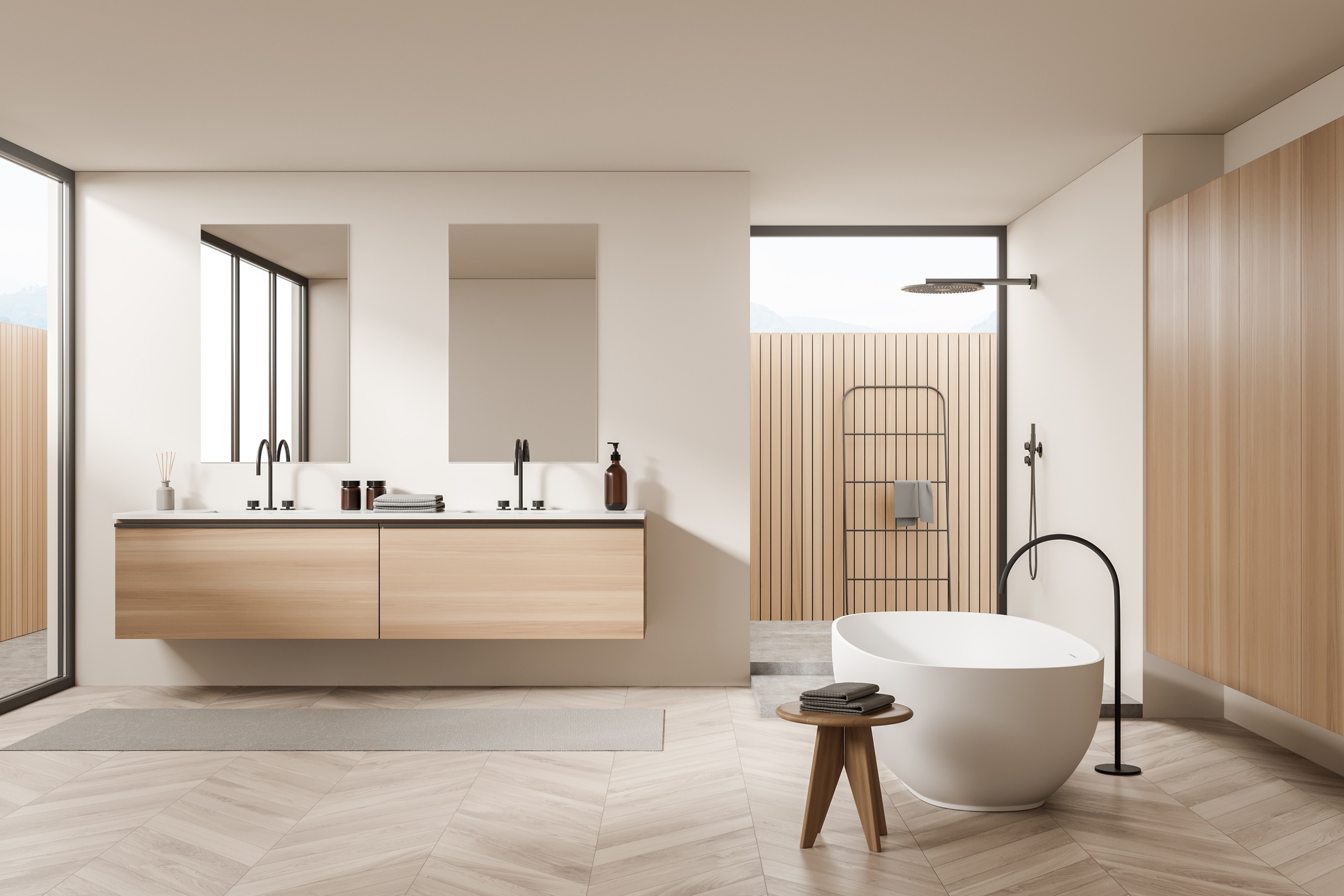Bathroom Color Trends 2018: Bathroom Interior Design Trends 2018

In 2018, bathroom design witnessed a departure from the ubiquitous neutral palettes, embracing bolder, more vibrant hues that injected personality and energy into these spaces. This shift was driven by a desire to create spaces that were both stylish and invigorating.
Jewel Tones in Bathroom Design
The popularity of jewel tones, like emerald green and sapphire blue, surged in 2018, adding a touch of luxury and sophistication to bathroom interiors. These rich, saturated colors were often used as accent walls, creating a dramatic focal point, or incorporated into bathroom fixtures and accessories, like vanities, faucets, and towel bars.
- Emerald Green: This color evoked a sense of tranquility and sophistication, making it ideal for creating a spa-like atmosphere. Emerald green was often used on accent walls, cabinetry, or as a color for bathroom tiles.
- Sapphire Blue: Sapphire blue brought a sense of calmness and serenity to the bathroom. It was frequently used on accent walls, in tile designs, or as a color for shower enclosures.
Metallic Accents in Bathroom Design
Metallic accents, such as gold and copper, added a touch of glamour and warmth to bathroom interiors in 2018. These accents were incorporated into a variety of elements, including:
- Faucets and Hardware: Gold and copper faucets and hardware became increasingly popular, adding a touch of luxury to bathroom vanities and showers.
- Lighting Fixtures: Metallic pendant lights and sconces provided a warm glow and a touch of elegance to bathroom spaces.
- Mirrors and Accessories: Gold and copper framed mirrors and decorative accessories, such as soap dishes and towel racks, added a touch of glamour to bathroom interiors.
Dark and Light Colors in Bathroom Design
The use of dark and light colors in bathroom design in 2018 reflected a desire for both drama and serenity.
- Dark Colors: Dark colors, such as navy blue, charcoal gray, and black, were often used on accent walls, creating a dramatic focal point. They were also used for cabinetry and flooring, adding a touch of sophistication and depth to the space.
- Light Colors: Light colors, such as white, cream, and pale gray, were used to create a sense of spaciousness and tranquility. They were often used on walls, ceilings, and vanities, providing a neutral backdrop for bolder accents.
Bathroom Materials and Finishes

In 2018, bathroom design trends embraced a shift towards natural materials and textured finishes, creating spaces that are both visually appealing and inviting. This trend reflected a growing desire for authenticity and connection to nature, while simultaneously incorporating modern elements to elevate the overall aesthetic.
The Rise of Natural Materials
The use of natural materials like wood, stone, and marble gained significant traction in bathroom design in 2018. This trend stemmed from a desire to create spaces that felt more organic and grounded.
- Wood: Wood, especially reclaimed or sustainably sourced varieties, brought warmth and character to bathrooms. It was often used for vanities, flooring, and accent walls, creating a sense of rustic charm.
- Stone: Stone, with its natural beauty and durability, was a popular choice for countertops, floors, and shower walls. Materials like granite, marble, and slate added a touch of luxury and sophistication.
- Marble: Marble, known for its elegant veining and timeless appeal, became a coveted material for bathroom design. It was often used for countertops, floors, and accent walls, adding a touch of grandeur to the space.
The Appeal of Textured Finishes, Bathroom interior design trends 2018
Textured finishes, such as subway tile with unique grout patterns, gained popularity in 2018. These finishes added depth and visual interest to bathroom spaces, breaking away from the monotony of traditional smooth surfaces.
- Subway Tile: Subway tile, a classic bathroom staple, was often used with contrasting grout colors to create a bold visual statement.
- Mosaic Tile: Mosaic tile, with its intricate patterns and small pieces, added a touch of artistry and visual complexity to bathroom walls and floors.
- Wood Plank Tile: Wood plank tile, which mimicked the look of real wood, provided a warm and inviting feel without the maintenance requirements of natural wood.
The Shift in Fixture Finishes
The traditional white bathroom fixtures were gradually replaced by more contemporary finishes like black and brushed nickel. This shift reflected a desire for a more modern and sophisticated aesthetic.
- Black Fixtures: Black fixtures, in matte or polished finishes, provided a striking contrast against lighter walls and countertops, creating a dramatic and contemporary look.
- Brushed Nickel Fixtures: Brushed nickel fixtures, with their warm, metallic tones, added a touch of elegance and sophistication to bathroom spaces.
A Bathroom Design Example
A bathroom designed with a combination of natural materials and modern finishes might feature a wood vanity with a brushed nickel sink and faucet. The walls could be clad in marble tiles with a unique grout pattern, creating a sense of depth and visual interest. The flooring could be made of natural stone, adding a touch of rustic charm. The overall design would be modern and sophisticated, yet warm and inviting, reflecting the best of both traditional and contemporary styles.
Bathroom Lighting Trends 2018

In 2018, bathroom lighting moved beyond mere functionality, embracing a more sophisticated approach that enhanced both ambiance and aesthetics. The focus shifted towards creating spaces that were both inviting and practical, blurring the lines between a simple bathroom and a luxurious spa-like retreat.
Statement Chandeliers and Layered Lighting
The use of statement chandeliers became increasingly popular in bathrooms, adding a touch of elegance and drama to the space. These chandeliers, often made of crystal or brass, served as focal points, drawing the eye upwards and creating a sense of grandeur. Layered lighting, a combination of different types of lighting, further enhanced the overall effect. This approach allowed for greater control over the ambiance, creating a warm and inviting atmosphere for relaxation or a bright and functional environment for getting ready.
The Role of Natural Light in Bathroom Design
Natural light plays a crucial role in creating a spa-like atmosphere in the bathroom. The soft, diffused light that streams through windows evokes a sense of tranquility and peace. It also enhances the overall brightness of the space, making it feel larger and more airy. To maximize natural light, designers often incorporated large windows or skylights, strategically placed to allow light to flood the bathroom.
Smart Lighting Technology in Bathroom Design
Smart lighting technology has revolutionized bathroom design, offering greater control and personalization. Smart bulbs, connected to a home automation system, can be adjusted to create different lighting moods. This allows for the creation of a calming and relaxing ambiance for a bath or a bright and energizing environment for getting ready. Some smart lighting systems even incorporate features like voice control, allowing users to adjust the lighting with simple voice commands.
Types of Bathroom Lighting and Their Applications
| Type of Lighting | Application |
|---|---|
| Ambient Lighting | Provides overall illumination, creating a general sense of brightness in the space. Often achieved through overhead fixtures or recessed lighting. |
| Task Lighting | Focused lighting used for specific tasks, such as applying makeup or shaving. Examples include vanity lights, sconces, or under-cabinet lighting. |
| Accent Lighting | Used to highlight specific features or architectural details, creating visual interest and enhancing the overall aesthetic of the space. Often achieved through spotlights, track lighting, or LED strips. |
